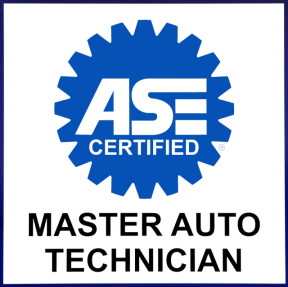What is a Smog Test?
 As of 6/2014, California smog check program has changed and is a little more complicated and simpler (leave it to our government).
As of 6/2014, California smog check program has changed and is a little more complicated and simpler (leave it to our government).
For all 2000 and Newer Vehicles
The program is now simplified. A tailpipe emissions test is no longer required! A smog test requires a visual and functional inspection and a computer data reading.
This information is gathered and sent to an analyzer, results of the inspection are electronically transmitted to the DMV. If passed, an e-certificate is issued for that vehicle.
If the vehicle fails, the technician or another person will explain the cause of the failure and inform you as to the various options available to remedy the failure.
For 1999-1996 vehicles:
This ONLY applies to 1999 and older vehicles- In parts of California where smog pollution is low, a "Basic" smog test is required (Santa Barbara, SLO etc. are basic areas). In parts of California where smog pollution is high (Ventura, LA, San Diego, Kern etc.), vehicle owners are required to complete an "Enhanced" version of California's smog test.
For an enhanced test- the vehicle is placed on a special testing device called a dyno and the drive wheels are rotated and an emission reading is taken by a probe placed in the tailpipe of the vehicle.
The information gathered is sent to an analyzer, results of the inspection are electronically transmitted to the Bureau of Automotive Repair Database and then to the DMV. If passed, an e-certificate is issued for that vehicle.
If the vehicle fails to pass, the technician or another person will explain the cause of the failure to the owner and inform as to the various options available to remedy the failure.
For 1995 and older vehicles:
In addition to the above, we must also: Check that the timing is to specs (if applicable) A check of the gas cap will hold pressure and contain the fuel vapors within the void space at the top of the fuel tank and, for most pre 1996 model year vehicles, a pressure test of the fuel tank and EVAP system, to check that the fuel tank and lines do not leak gas fumes into our atmosphere.
All this information gathered is sent to an analyzer, results of the inspection are electronically transmitted to the Bureau of Automotive Repair Database and then to the DMV. If passed, an e-certificate is issued for that vehicle. If the vehicle fails, the technician or another person will explain the cause of the failure and inform you as to the various options available to remedy the failure.
Is my car basic or enhanced?
Check this website to determine which smog your vehicle requires. Click Here



